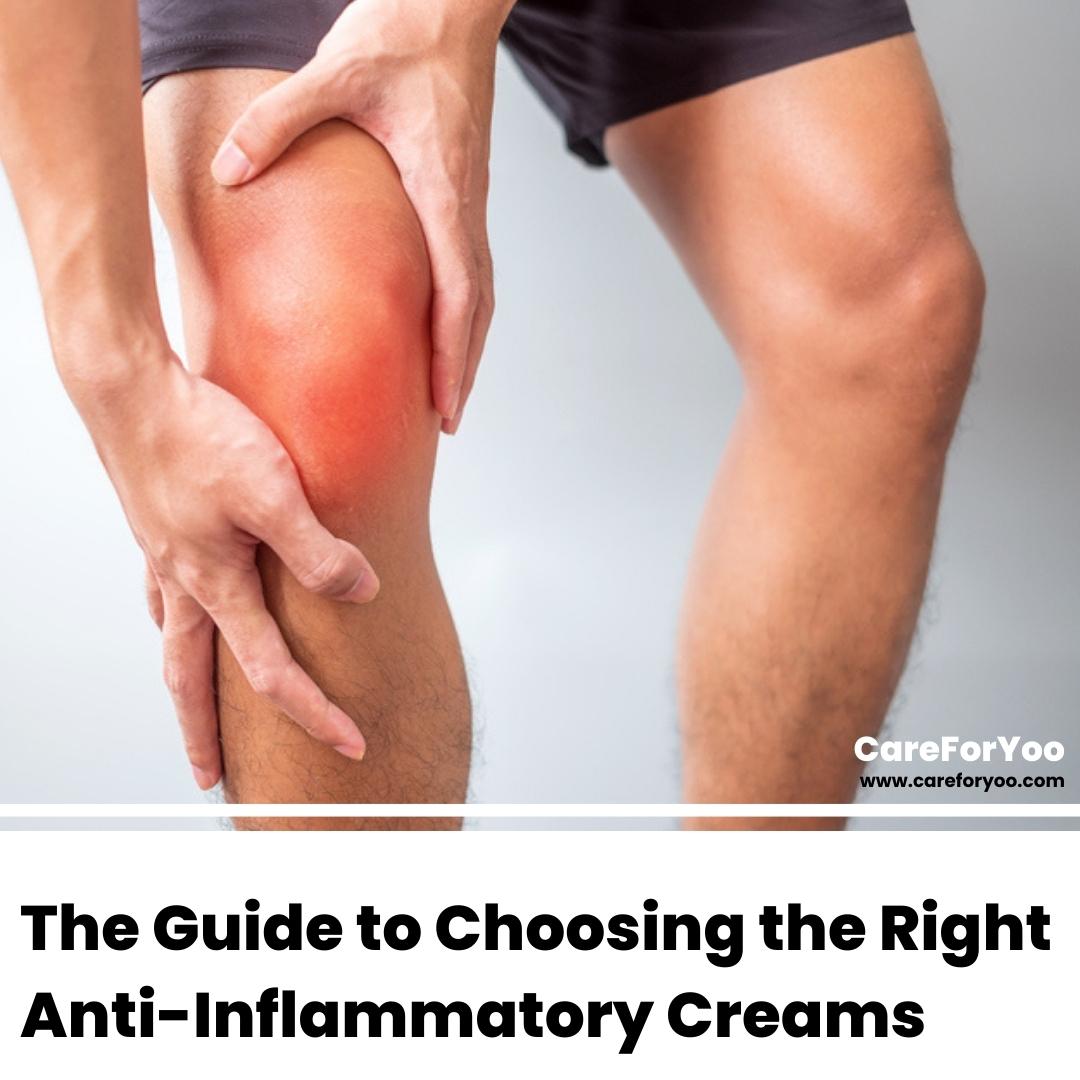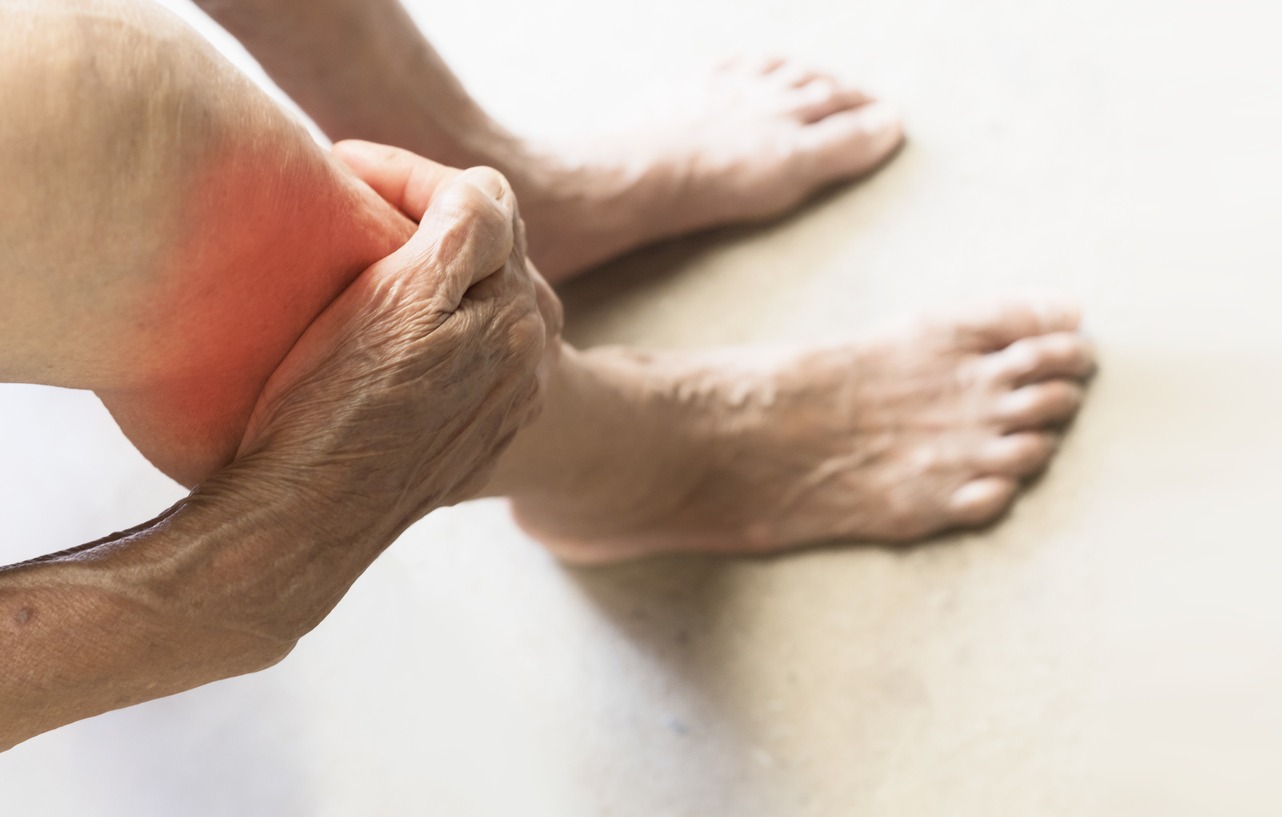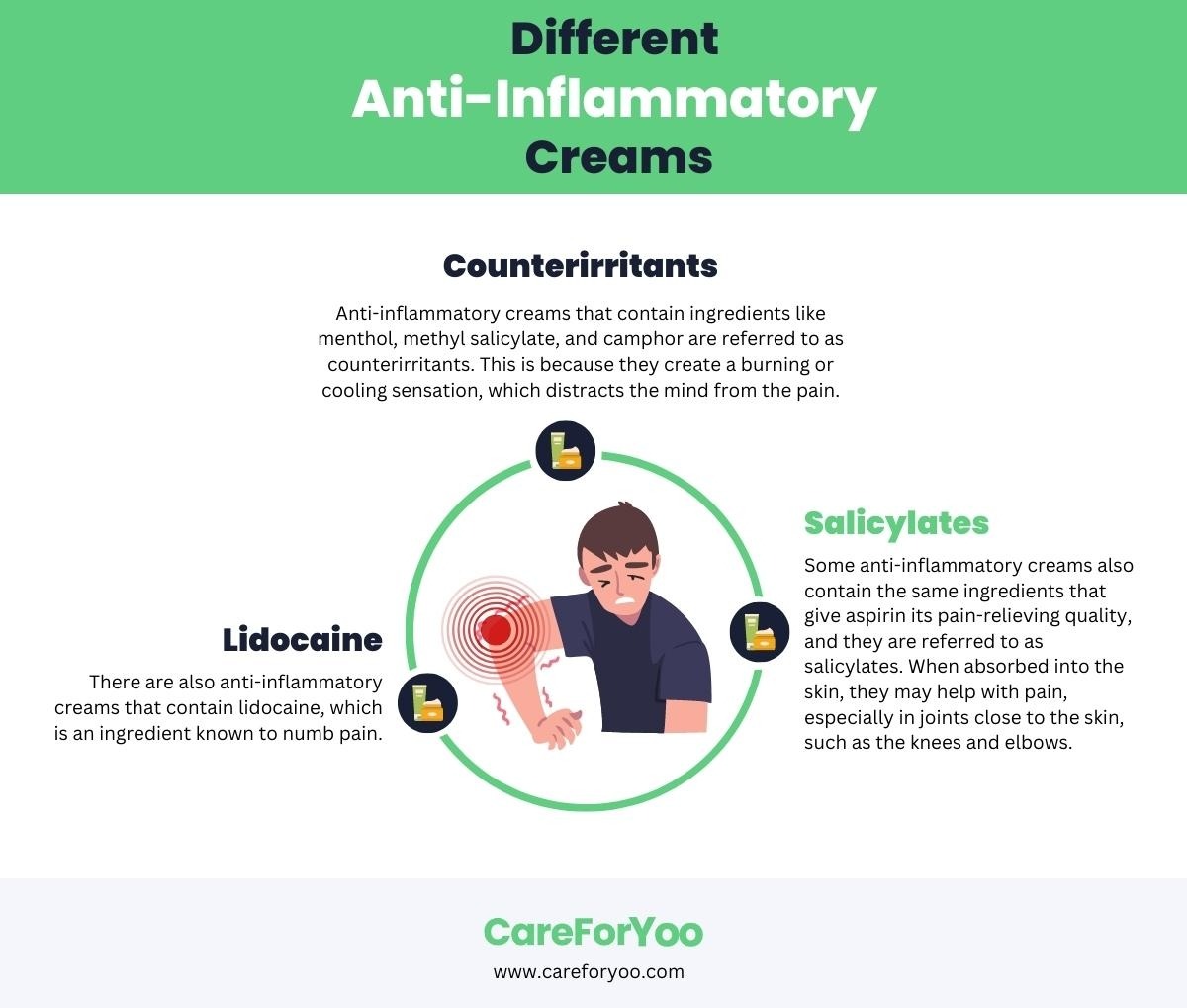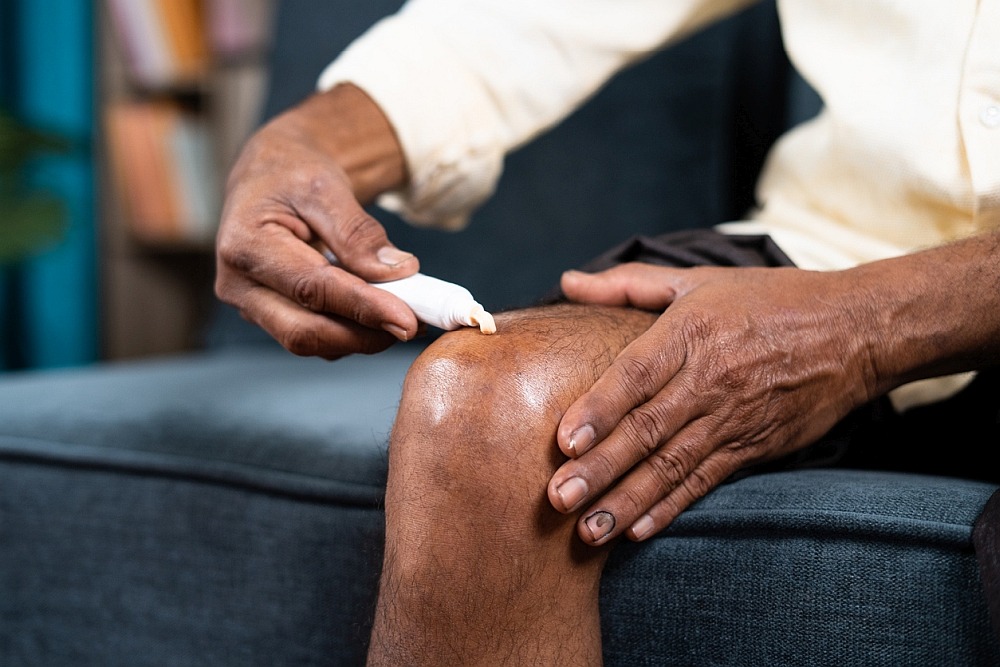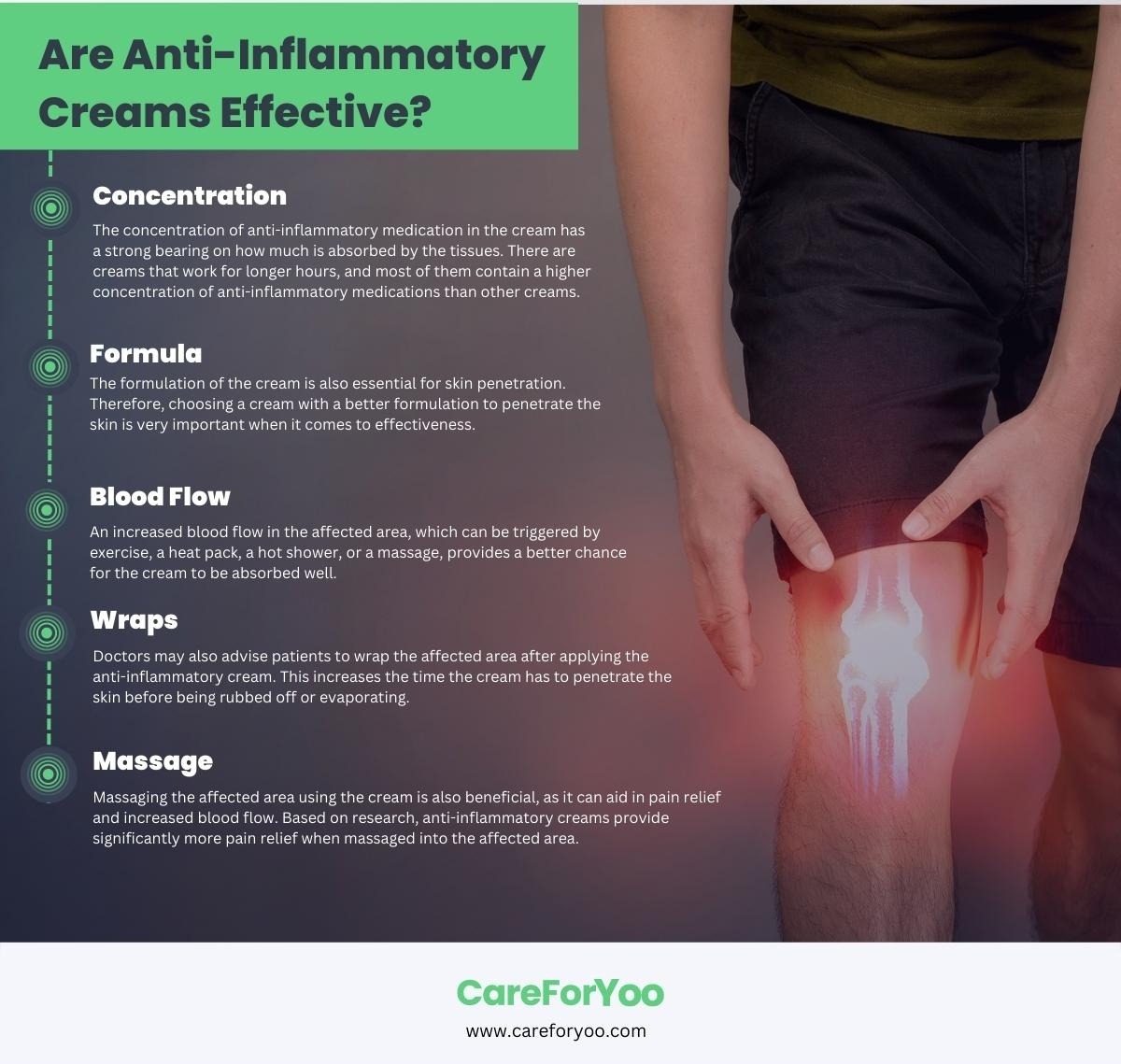Disclaimer: This article is for informational and educational purposes only and does not substitute professional medical advice. It is important to always consult a medical professional for any health issues.
When the human body encounters an offending agent, such as viruses, bacteria, and toxic chemicals, or when it suffers an injury, it triggers the immune system to activate. The immune system then sends out inflammatory cells and cytokines, which are substances that stimulate more inflammatory cells, as its first responders. The cells will initiate an inflammatory response to either trap bacteria and other harmful agents or start repairing damaged tissue. Pain, bruising, swelling, or redness may come from this. In addition to that, inflammation also affects body systems that we do not see.[1]
Many people who experience inflammation take anti-inflammatory tablets. However, since there is a rising concern over the side effects of these medicines, a lot of people are considering using anti-inflammatory creams instead. There are many available products for topical pain relief at local drugstores, and some are prescribed by doctors. However, before you go out and buy an anti-inflammatory cream to ease your muscle ache, joint pain, or other inflammation issues, you need to ensure that you are getting the right cream to avoid further health issues.
If you are looking for an anti-inflammatory cream that you can use but do not have any idea how to choose the right and best one, we are here to help you. In this post, we are giving you a guide to choosing the right anti-inflammatory creams.
What are the Types of Inflammation and Their Causes?
Before we talk about anti-inflammatory creams, let us first discuss inflammation. To be able to find the right treatment for inflammation, it is important to know what type you have and its causes. Inflammation has two types, which are acute and chronic.
Acute Inflammation
Acute inflammation is short-term and mainly due to an injury or illness.[2] It can result from exposure to a substance, such as dust or a bee sting, an injury, or an infection. For instance, the body sends inflammatory cells to the injury site when you cut your finger in order to heal the wound.[1] Its signs can appear within hours or days, depending on the cause. There are also cases wherein they can quickly become severe. How acute inflammation develop and how long it will last depend on the cause, the part of the body affected, and other individual factors.[2] Below are some of the key signs of acute inflammation:
- Pain: It can occur continuously or only when an individual touches the affected area.
- Redness: It occurs due to an increase in the blood supply to the capillaries in the area.
- Loss of Function: Difficulty in moving a joint, breathing, and sensing smell, among others, can also be experienced.
- Swelling: If fluid builds up, a condition referred to as edema can develop, which will make the affected part swollen.
- Heat: The affected area may also become warm to the touch due to the increased blood flow.
These signs are not always present, as there are inflammations that are “silent” or do not have any symptoms. Some may also experience tiredness and may have a fever. These symptoms may last a few days to a few weeks.[2]
Chronic Inflammation
When the inflammation is chronic, it means that the body continuously sends inflammatory cells even when there is no outside danger. For instance, when a person has rheumatoid arthritis, the inflammatory cells and substances attack joint tissues, which leads to an inflammation that comes and goes. This can cause severe damage to joints with pain and deformities.[1]
Chronic inflammation may develop if an individual has the following:
- Sensitivity: When the body senses something that should not be there, it can result in an allergy.
- Exposure: There are times when long-term, low-level exposure to an irritant, like an industrial chemical, may lead to chronic inflammation.
- Autoimmune Disorders: This is when the immune system mistakenly attacks normal healthy tissues. One example is psoriasis.
- Autoinflammatory Diseases: A genetic factor also affects the way the immune system works. An example is Behcet’s disease.
- Persistent Acute Inflammation: When a person does not fully recover from acute inflammation, it may lead to chronic inflammation.
Some of the factors that may increase the risk of chronic inflammation include older age, obesity, smoking, stress, and sleep problems.[2]
Why Does Inflammation Hurt?
Whether acute or chronic, inflammation can hurt. You can feel pain, distress, discomfort, and stiffness in the affected area, depending on the severity of the inflammation. It causes pain because swelling pushes on sensitive nerve endings, sending pain signals to the brain. Aside from that, some of the chemical processes of inflammation affect the behavior of nerves, which cause enhanced pain sensation.[3]
The more cells and inflammatory compounds that are present, the more likely they are to infiltrate joints, where they may irritate the smooth tissue covering the ends of bones where joints are formed, cause swelling of the joint lining, and eventually cause the cartilage to break down.[3]
Different Anti-Inflammatory Options
Doctors can prescribe various options when it comes to anti-inflammatory medications. They range in effectiveness and side effects. Below are a few examples:
- Corticosteroid Injection (Cortisone): This treatment is like a water bomber dropping water on a fire. However, it comes with risks, including flare of pain, infection, and possible short-term weakening of tissue, along with anxiety.[4]
- Oral Anti-Inflammatory Medications: These include taking medicines like prednisolone, which contains steroids and should be prescribed by a doctor. There are also over-the-counter options, such as Non-Steroidal Anti-Inflammatories (NSAIDs) like Voltaren and Nurofen. These medications rarely have short-term side effects but may also affect blood pressure, asthma, and other pre-existing health conditions.[4]
- Anti-Inflammatory Creams: This is our main topic. There are anti-inflammatory creams that contain steroids, while most are non-steroid based. Compared to oral medication, less of it is absorbed into the bloodstream, which reduces the risk of harmful side effects.[4] Continue reading below to learn more about these.
What are Anti-Inflammatory Creams and How Can They Help?
When you are experiencing muscle aches and joint aches, one of the options is to apply anti-inflammatory creams to the affected area. Anti-inflammatory creams are under non-steroidal topical treatments for inflammation. They belong to the same category as gels, rubs, solutions, and sprays that are made to be administered directly to the skin over an aching joint or boney region.
The next question you might be thinking of is if anti-inflammatory creams are effective. Well, the answer to that is, yes, they are effective. Based on research, topical NSAIDs provided good levels of pain relief in acute conditions, including strains, sprains, and overuse injuries. [4] But the thing is that not all anti-inflammatory creams available on the market are the same.
Are Anti-Inflammatory Creams Effective?
For an anti-inflammatory cream to be effective, it needs to reach the inflamed tissue in sufficient concentration. This way, it can produce a relevant anti-inflammatory effect. Below are some of the factors that influence the effectiveness of anti-inflammatory creams:
- Concentration: The concentration of anti-inflammatory medication in the cream has a strong bearing on how much is absorbed by the tissues. There are creams that work for longer hours, and most of them contain a higher concentration of anti-inflammatory medications than other creams.[4]
- Formula: The formulation of the cream is also essential for skin penetration. Therefore, choosing a cream with a better formulation to penetrate the skin is very important when it comes to effectiveness.
- Blood Flow: An increased blood flow in the affected area, which can be triggered by exercise, a heat pack, a hot shower, or a massage, provides a better chance for the cream to be absorbed well.[4]
- Wraps: Doctors may also advise patients to wrap the affected area after applying the anti-inflammatory cream. This increases the time the cream has to penetrate the skin before being rubbed off or evaporating.
- Massage: Massaging the affected area using the cream is also beneficial, as it can aid in pain relief and increased blood flow. Based on research, anti-inflammatory creams provide significantly more pain relief when massaged into the affected area.[4]
What Conditions Can Benefit from Anti-Inflammatory Creams?
As mentioned earlier, for an anti-inflammatory cream to be effective, it needs to penetrate the skin before it can reach the affected tissues. Therefore, anti-inflammatory creams are more effective when the problem area does not lie too far away from the surface of the skin.[4] With this, the use of anti-inflammatory creams is more likely to help in the following conditions:
- Acute muscle strains
- Plantar fasciitis
- Ligament strains
- Achilles tendinitis
- Shin splints
- Patellar tendinitis
- Tennis and golfer’s elbow
- ITB syndrome
- Bursitis
Also, even though the pain from the neck and back usually comes from deep structures, anti-inflammatory creams may also be used on them to ease the pain.[4]
Different Anti-Inflammatory Creams
There are numerous anti-inflammatory creams that you can buy over the counter, which can help lessen the pain and reduce inflammation. Some products are effective for a lot of people, while others might not work as you expected. There are also various types of anti-inflammatory creams available in the market today.
Counterirritants: Anti-inflammatory creams that contain ingredients like menthol, methyl salicylate, and camphor are referred to as counterirritants. This is because they create a burning or cooling sensation, which distracts the mind from the pain.[5]
Salicylates: Some anti-inflammatory creams also contain the same ingredients that give aspirin its pain-relieving quality, and they are referred to as salicylates. When absorbed into the skin, they may help with pain, especially in joints close to the skin, such as the knees and elbows.[5]
Lidocaine: There are also anti-inflammatory creams that contain lidocaine, which is an ingredient known to numb pain.[5]
If you are looking for anti-inflammatory creams, we have a few suggestions below that might help you decide what to buy:
- Ebanel Menthol Pain Relief Cream: This anti-inflammatory cream is made of menthol and camphor. It is a cooling and warming cream that penetrates muscles, nerves, ligaments, and tendons to relieve pain, spasms, and stiffness due to injuries, workouts, falls, and overexertion.
- Activene Arnica Gel Cream: This anti-inflammatory cream is made to give relief from pain in joints and tendons. It is mostly used by those who suffer from arthritis, fibromyalgia, plantar fasciitis, and pain in the knee, shoulder, neck, and back. It contains menthol, tea tree oil, aloe vera, and other natural ingredients.
- Amazon Basic Care Arthricream: This anti-inflammatory and pain relief cream contains trolamine salicylate, and it can be used for the whole body. It is commonly used for arthritis, backaches, muscle strains, sprains, and bruises.
- Ultra-Strength Bengay: This anti-inflammatory cream contains 30% methyl salicylate, along with camphor and menthol. It penetrates deeply, making it great for soothing backache, arthritis, and other minor aches like sprains and bruises.
- ArnitRX Anti-Inflammatory Cream: This is a steroid-free anti-inflammatory cream that is used to relieve aches, strains, sprains, bruising, stiffness, swelling, and sore muscles. It is made of arnica, ilex, vitamin B6, and vitamin E oil.
- Lidocream Natural Numbing Anti-Inflammatory Cream: This cream combines the numbing and pain-relieving power of lidocaine with natural ingredients to help reduce inflammation in the body and promote faster healing. It can be used to ease neck, knees, muscles, nerves, joints, arthritis, and back pains.
- Penetrex Joint and Muscle Therapy Cream: This one is a whole-body therapy cream that can penetrate the skin deep. It is a vegan solution to inflamed joints and muscles. It does not burn or freeze the skin, and it also does not have a strong odor, which is common to most anti-inflammatory and pain relief creams.
Things to Consider When Using Anti-Inflammatory Creams
If you wish to use anti-inflammatory creams, it is important to be careful. Even though these creams can be bought over the counter, it is still best to consult with a medical professional before using them, especially if you have other health issues. Below are other considerations when using anti-inflammatory creams:
- Do not apply anti-inflammatory creams to broken skin, as they can worsen or further damage your skin.
- Allergic reactions are uncommon when it comes to anti-inflammatory creams. However, it is important to test the product on a small part of your skin first. Wait for a while to see how your skin will respond to the ingredients before using more on the affected area. In case skin redness, itching, or irritation occurs, wash off the product and seek medical advice.[4]
- After applying the cream, make sure that you wash your hands immediately.
- Never touch or rub your eyes while you have topical cream on your hands.
- Always follow the directions indicated on the package of the topical cream.
- Avoid using any anti-inflammatory creams if you are pregnant or breastfeeding without seeking advice from a doctor first.[4]
Conclusion
Anti-inflammatory creams can be beneficial for those who are suffering from inflammation and are looking for relief. These products are also great for those who do not want or are not allowed to take anti-inflammatory medicines due to other health concerns. Also, compared to taking medications like oral tablets and injections, applying anti-inflammatory creams to the affected areas are much safer. We hope that this post helped you learn more about choosing the right anti-inflammatory creams.
References
[1] Cleveland Clinic, E. (2021, July 28). Inflammation: What is it, causes, symptoms & treatment. Cleveland Clinic. Retrieved September 22, 2022, from https://my.clevelandclinic.org/health/symptoms/21660-inflammation
[2] Felman, A. (2020, April 13). Inflammation: Types, symptoms, causes, and treatment. Medical News Today. Retrieved September 22, 2022, from https://www.medicalnewstoday.com/articles/248423#causes
[3] Barhum, L. (2022, September 1). What is inflammation? Verywell Health. Retrieved September 22, 2022, from https://www.verywellhealth.com/what-is-inflammation-187934#toc-why-inflammation-hurts
[4] MyPhysio Perth, E. (2018, October 30). Anti-inflammatory gels and creams – do they work?? My Physio Perth. Retrieved September 22, 2022, from https://myphysioperth.com.au/do-anti-inflammatory-gels-work/
[5] Pathak, MD, N. (2021, August 30). Topical pain relief: Creams, gels, and rubs. WebMD. Retrieved September 22, 2022, from https://www.webmd.com/pain-management/topical-pain-relievers

